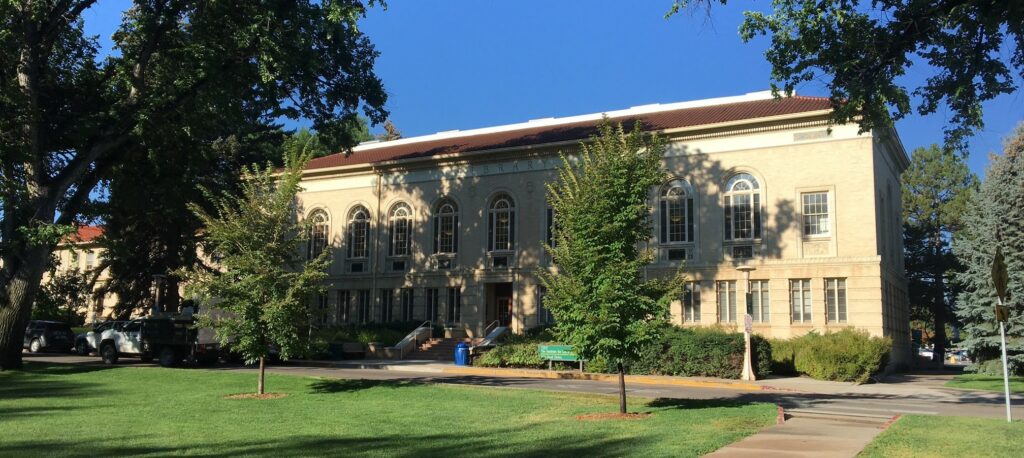THE BEGINNING
The Institute for Learning and Teaching had its beginnings in 2005, when the Provost and President set aside funds for a new on-campus program dedicated to the advancement of learning and teaching at Colorado State University.
Initially named the Center for Pedagogical Advancement and Learning Inquiry, its purpose was to provide faculty the support formerly offered by the Center for Teaching and Learning and the Office of Instructional Services (dissolved in 2003 and 2005 respectively).

Serving as its board of directors, the University Distinguished Teaching Scholars met in early 2006 to choose a more fitting name for the new unit, define its mission, and create a position description for its first director. Following a national search, Mike Palmquist, a CSU professor of English who had joined the faculty in 1990 and who had become a University Distinguished Teaching Scholar in 2000, was named director, effective September 15, 2006.
TILT’s initial staff included administrative assistant Shirley Guitron and instructional designers Shaun Beaty, Patricia Cantrell, and Sandra Chapman, as well as two campus liaisons—Debora Colbert from the Division of Continuing Education and Sally Hibbitt from ACNS—both with 25 percent appointments.
In July 2007, the Office of Service Learning and its director, Clayton Hurd, moved from SLiCE to TILT and, Peter Connor, Web content writer, editor and, subsequently, the Institute’s Director of Communications, came on board. In 2008, Patricia Cantrell accepted a new position with CSU Global, Kathy Zellers and Craig Spooner joined the instructional design team, and Justin Switzer filled the need for an instructional materials developer.
Assigned temporary quarters in the basement of the Andrew G. Clark Building (A-wing), TILT began pursuing its mission while awaiting the completion of renovations on its permanent home in the University’s planned learning center, formerly the Music building and, prior to that, the University’s first dedicated, stand-alone library.
In late 2007, in consultation with the Provost’s office, the colleges, and the University Distinguished Teaching Scholars, the Institute’s mission was expanded to include a focus on the direct support of student learning, engagement, and advising, and the planned learning center was given the Institute’s name.
To implement the expanded mission, the University’s Office of Nationally Competitive Scholarships and its director, Heather Esterday, joined TILT in the fall of 2008 while national searches were launched for directors of the Institute’s Learning Programs, Office for Undergraduate Research and Artistry (OURA), and Office of Academic Concierge. Mark Brown, OURA’s new director, was welcomed to the Institute in January 2009. Heather Landers, director of Learning Programs, joined the Institute in April 2009. In July, 2009, Elaine Green joined TILT as director of its new Academic Integrity Program and Craig Spooner left TILT to focus full time on his work for the ACCESS Project.
Renovation and refurbishing of the former Music building on the CSU Oval, into which The Institute for Learning and Teaching then moved, was completed in the spring of 2009. Shortly thereafter, the Center for Advising and Student Achievement (CASA) and the Transfer Advising Center moved in as well.
PROGRAM GROWTH AND REALIGNMENT
Since 2009, the Institute has seen significant growth in the number of students supported through its learning and engagement programs. Between 2009 and 2014, for example, the number of students reported to be engaged in the kinds of mentored inquiry supported by OURA grew from 1,400 to nearly 5,000, while the number of student visits to the Arts and Sciences Tutoring Program, housed in the Russell George Great Hall, grew from 4,500 to more than 14,000. Altogether, Learning Programs, through its tutoring program, study groups initiative, academic skills workshops, and enrichment activities, more than quadrupled the number of students it served. In 2010, Christie Yeadon joined Learning Programs as associate director and Amanda Purnell was promoted from an administrative coordinator position to associate director of OURA.

